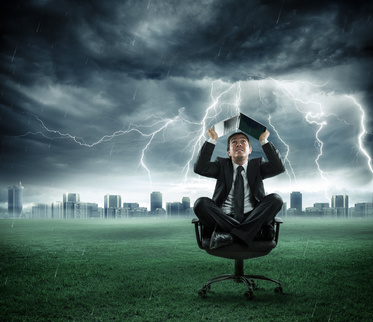JoomConnect Blog
‘Facts’ vs. ‘Feels’: Creating the Right Balance for Your MSP Marketing
The Super Bowl is a time where people watching TV actually pay attention to the commercials being shown. Even non-football fans will watch - just for the commercials! Some of these advertisements shown are more memorable than others.
What commercials do you remember?
You may recall the Budweiser Puppy Love commercial from 2014 when a Clydesdale forms a close bond with a Labrador Retriever puppy. Another well known video - which may or may not be before your time - was Coca-Cola’s “Mean” Joe Greene commercial from 1980. This commercial was so powerful that NBC produced the movie The Steeler and the Pittsburgh Kid based on it.
Both of these ads are memorable and well-renowned. But, one thing that they ARE lacking? Actual information about the product they are intending to promote!
That’s because they’re emotional - rather than rational - appeals.
Rational vs. Emotional Appeals
As you may have gathered from above, an emotional appeal is a persuasion method used in marketing to create a certain type of emotional feedback and/or response from a target audience. They’re very popular in the B2C space because these types of appeals tend to be very effective in making an audience notice, remember, share, and purchase.
On the contrary, a rational appeal is a technique in which a marketing communication attempts to appeal to its audience’s rational mind by using facts and logical arguments. You see these types of advertisements in the B2B space, and sometimes the B2C space (depending on the product category).
Because of the nature of business-to-business partnerships, marketing efforts tend to appeal more to the rational side than the emotional side of things. It does make sense - B2B purchases tend to be for much larger sums of money than do consumer purchases, so decision makers want to decide based on cold, hard facts. But, that doesn’t mean they can’t be swayed by emotions.
While not as popular as the other two commercials mentioned, you may recall the Cat Herders commercial from 2000 that aired during the Super Bowl. This award-winning commercial was made by Fallon for Electronic Data Systems (EDS) played off the metaphor/expression “herding cats”; the cowboys successfully herding the cats was intended to be analogous to EDS’ ability to solve the seemingly unsolvable problems that companies were facing. The commercial helped revive their brand and won numerous awards.
What we’re trying to say is that just because you’re marketing to other businesses doesn’t mean you can’t incorporate emotional appeals into your marketing.
Invoking the Emotion You Want
With emotional appeals, you can design them in a way that evokes a specific emotion. For example, you can use them to create one of the following:
- A sense of security or well-being
- Feelings of individuality/uniqueness
- A sense of fear, due to a perceived threat
- A feeling of love and/or connectedness
- Feelings of relief from negative emotions (pain, frustration, anxiety)
If you’re trying to trigger a specific type of emotion during a marketing campaign that you are running to get your desired result, you need to frame the words you use, your imagery, and (sometimes) the colors in your marketing around that emotion.
Let us illustrate how you might frame a campaign to promote your BDR services.
The Words You Use
The words used in your marketing have a great impact as to how your overall message is framed.
For example, if you’re trying to sell more of your BDR services, you may choose to center your marketing message around fear. Losing all of your business data can be quite scary, after all!
In your message, you could discuss how devastating it is for small businesses to lose all of their data, and the consequences that can face them if it does happen. You can instill fear by talking about the frequency of it happening, or the many numerous things that can cause that to happen. Then, you would tie it back to your BDR service, and how your service can protect their company and keep their data safe.
Your Imagery
 You want the image(s) that you use in your marketing to match the tone and central messaging of your text.
You want the image(s) that you use in your marketing to match the tone and central messaging of your text.
Going back to our previous BDR example, you would want to pick imagery that highlights danger. You can see from the image to the right that, while also depicting a dangerous act, this image also evokes humor due to its absurdity. Humor is a great tool to incorporate into your marketing messages because it makes them more memorable.
No matter what, the words you use and your imagery should fit together well. If not, your marketing likely isn’t going to be that effective.
The Psychology of Color
Did you know that certain colors tend to evoke certain feelings and emotions in those who view them? You can take advantage of this by pairing the right colors with the words and imagery you use.
- Pink: sentimental, romantic, fun, excitement, youthfulness, feminine
- Red: energy, excitement, passion, danger, strength, power, stop
- Orange: energy, activity, creativity, adventure, fresh, fun
- Yellow: energy, joy, optimism, playful, happy, caution
- Green: wealth, natural, prestige, life, growth, nature, vitality
- Blue: communication, trustworthiness, reliability, calmness, sadness
- Purple: royalty, luxury, nostalgia, spiritual, mysterious, feminine
- Brown: natural, organic, simple, honest
- Black: luxury, power, sophistication, death, sorrow, danger
- White: purity, innocence, perfection, simplicity, minimalism, clean
Note that there is a wide spectrum, even within each color. Some of this has to do with the shade of color that you choose to include. For example, lighter shades of purple tend to be associated with femininity or sentimental feelings, while darker shades of purple are often associated with luxury and royalty. The colors you use will also get some of their meaning based on what you pair them with. For example, an advertisement using green and depicting money-centric themes will come across as different than an advertisement using green and depicting nature-centric themes. Your color choices also derive meaning depending on the color combinations you choose.
Because of all of this, don’t make color choice your highest priority. You can instead just choose your coloring based on colors associated with your brand.
In your BDR campaign, you could use black and/or red to signify death, sorrow, and danger. Or, you could just use your branding colors and let your image itself do the talking.
The Balancing Act
Ultimately, as a business serving other businesses, you want to make sure your marketing isn’t 100% emotion-centric. Big name brand B2C companies may be able to get away with this, but it’s much harder for smaller B2B companies to achieve success in this way.
But, that doesn’t mean that you should stick to 100% rational appeals. Human beings are both rational AND emotional, so there’s no reason to stick to just one type of appeal. We suggest having a little bit of both, and vary the amount depending on the central message of your marketing campaign.
If you would like help creating the perfect balance for you, reach out to us for assistance.




Comments